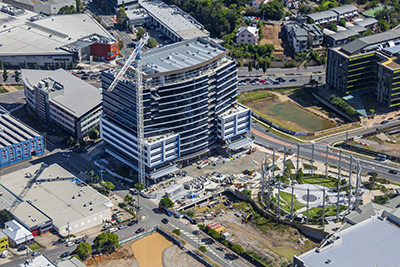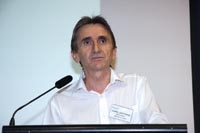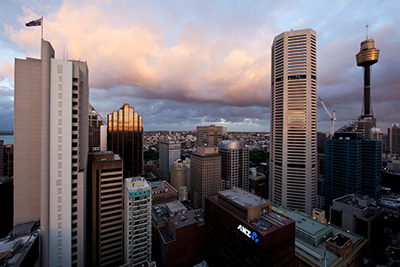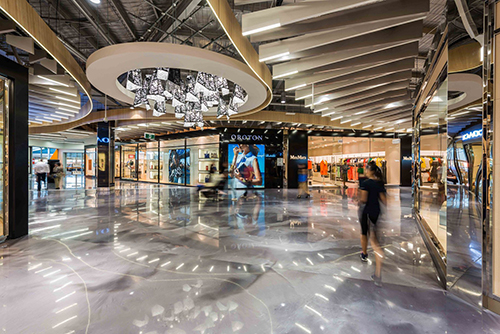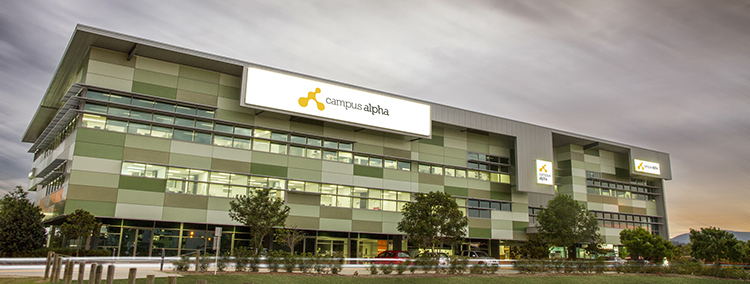Paving the way for investment and tourism in Sydney’s new ‘granite belt’
SYDNEY’s $50 million program to light up and beautify its central business district footpaths is making the city more attractive for pedestrians, tourists and local businesses alike.
The City of Sydney has committed to improving the appearance and safety of the most popular walking routes in Central Sydney over the next 10 years by installing uniform granite paving and new LED lighting. 
Work has already been completed along eight major routes, including Castlereagh, Elizabeth and Pitt streets, where the city has installed 62 LED Smartpole lights and more than 12,600 square-metres of Australian granite to replace aging asphalt.
Peter Rugg, manager of the five-star Radisson Blu Plaza Hotel on the corner of Pitt and O’Connell streets, where the city recently completed footpath upgrade works said small changes like this were making a big difference to the appeal of the city.
“Footpaths might seem like a small thing, but people who are guests at our hotel are out on the streets all day, so a good footpath projects the right image of the city,” Mr Rugg said. 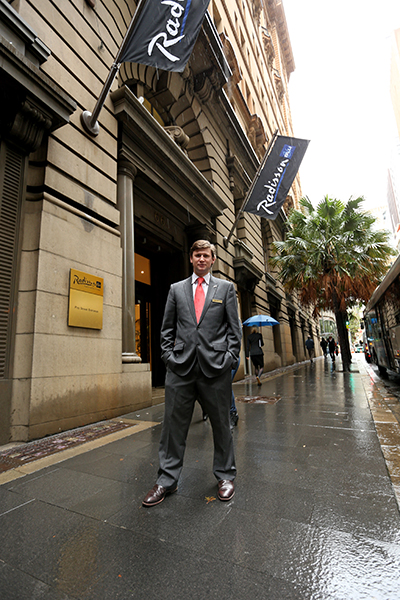
“George and Pitt streets are the two arteries of the city and everyone walks down those streets to get to the harbour, so to have them looking like they are now makes the city look more attractive, uniform and clean.
“At the moment we have guests from every corner of the globe staying with us, so we’re showcasing our city to the world, and attracting more tourists and visitors to Sydney every day.”
The granite pavement program and LED lighting upgrades are part of the city’s record $1.94 billion, 10-year building and construction program, which is boosting businesses and creating jobs.
Contractors who worked on the pavement program include Sydney Harbour Paving, Ford Civil and QMC Group, with each company employing about 10 people for each site.
Lord Mayor Clover Moore said the city’s corporate plan for the next decade would invest in more than 400 projects, including major commitments to Green Square and George Street light rail.
“The city’s investment in new infrastructure and improvement works is creating employment, economic growth and community benefits,” the Lord Mayor said.
“Programs such as the granite pavement and LED lighting upgrades are helping to improve our public face and building our reputation as a global city, attracting investment and tourism.”
Streets to be upgraded with granite this year include sections of Bathurst, Bridge, Elizabeth, York, Hunter, Bligh and Bent streets, while Castlereagh and Bond streets will benefit from new LED lighting.
Since March 2013, Sydney has saved almost $300,000 and reduced energy use by more than 25 percent, due to the roll out of more than 2,600 LED street and park lights across the city.
About 2,000 new jobs will be created off the back of the City of Sydney’s record $1.94 billion infrastructure program.
The statistics are based on a methodology developed by the NSW Treasury for state government infrastructure, which estimated that for every $1 million spent on infrastructure, 10 full-time equivalent jobs are created.
These 10 jobs include four jobs created directly, and six jobs created as a result of the flow-on effects of the infrastructure spending, meaning more materials are produced and therefore more jobs created.
Cr Moore said the city was creating an environment where walking is easy, enjoyable and convenient, with the number of walking trips forecast to double in the city by 2030, due to 100,000 new residents and 110,000 new jobs.
The city is also working with the State Government to reduce pedestrian waiting times at intersections, Cr Moore said.
ends

 How to resolve AdBlock issue?
How to resolve AdBlock issue? 